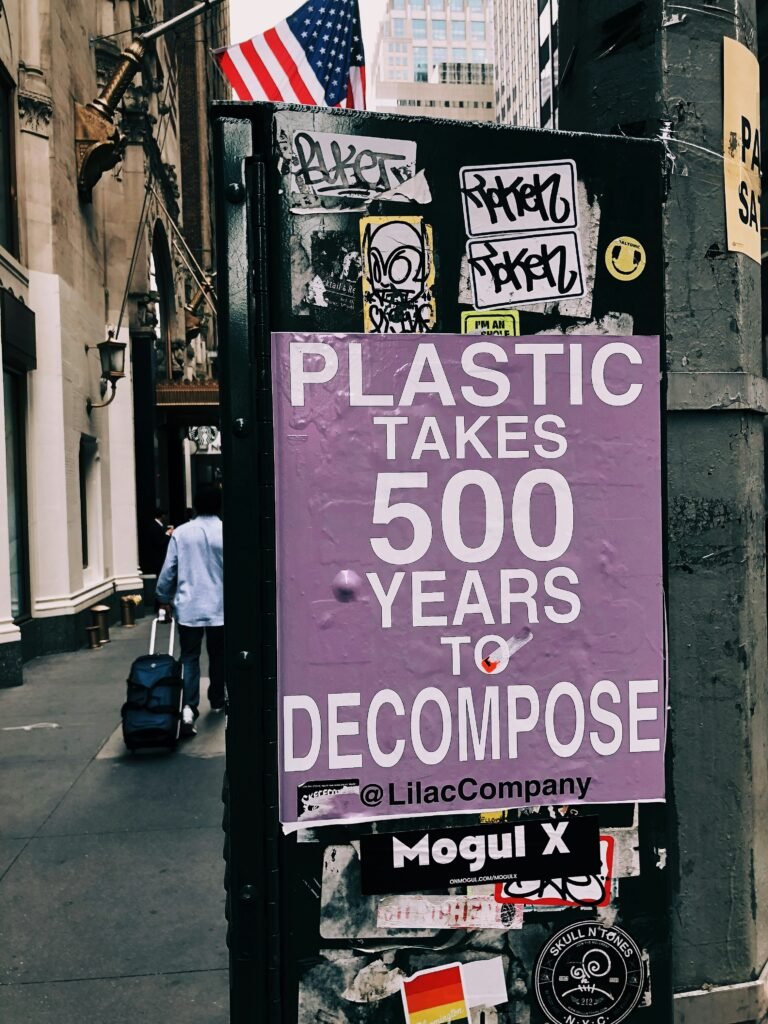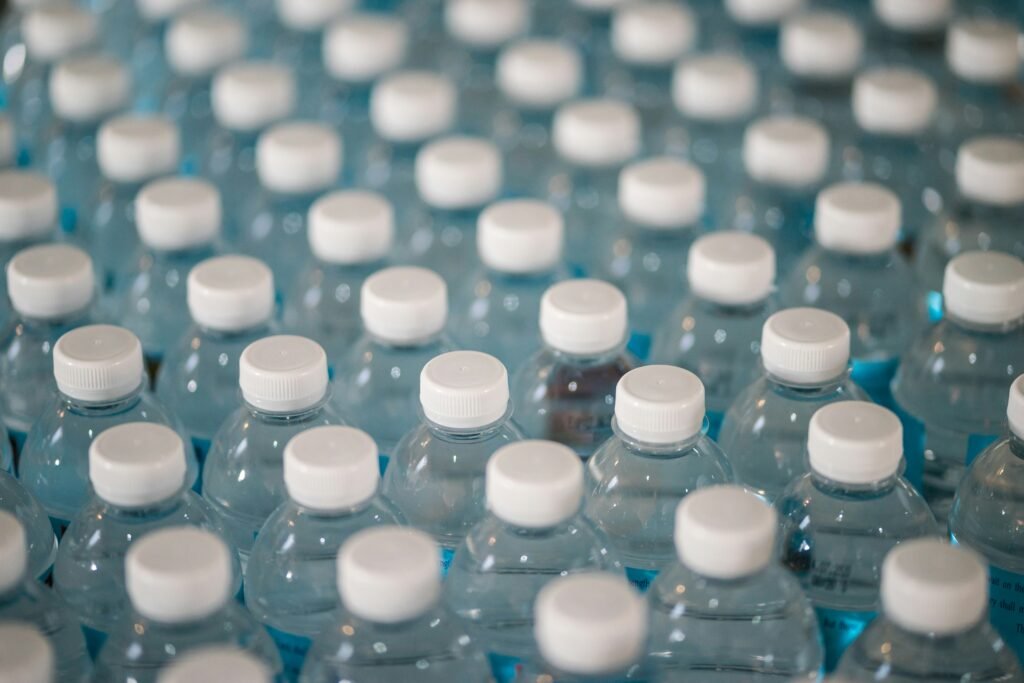Welcome to a comprehensive guide on understanding the composition of plastic materials. In this article, you will explore the different types of plastic materials and the key components that make up these versatile substances. By gaining a deeper understanding of the composition of plastic materials, you will be able to make informed decisions when it comes to selecting the right materials for your projects and learning how to properly recycle them. Let’s dive in and unravel the fascinating world of plastic composition! Have you ever wondered about the composition of the plastic materials that surround us every day? From water bottles to electronics, plastic is a ubiquitous material in our modern world, but many of us may not fully understand what makes up these materials. In this article, we will delve into the world of plastic materials, exploring their composition, types, and uses. Let’s take a closer look together!

This image is property of images.unsplash.com.
The Basics of Plastic Materials
Plastic materials are an essential part of our everyday lives, but what exactly are they made of? Most plastics are composed of polymers, which are long chains of molecules that repeat over and over. These polymers are typically derived from petrochemicals such as crude oil or natural gas.
Plastics can also contain various additives, such as fillers, plasticizers, and stabilizers, which help determine the material’s properties and behavior. Understanding the basic components of plastic materials is the first step in comprehending their composition and uses.
Polymer Composition
Polymers are the building blocks of plastic materials, and they come in a variety of forms, each with its own unique properties. Some common types of polymers used in plastics include:
- Polyethylene (PE): A versatile polymer used in various applications, including packaging and construction.
- Polypropylene (PP): Known for its high strength and heat resistance, PP is commonly used in automotive parts and containers.
- Polyvinyl chloride (PVC): A widely used polymer in construction and healthcare products due to its durability and flexibility.
- Polystyrene (PS): This polymer is popular in packaging and insulation materials for its lightweight and impact-resistant properties.
Understanding the different types of polymers and their characteristics is crucial for selecting the right plastic material for a specific application.
Additives in Plastic Materials
In addition to polymers, plastics can contain a variety of additives that enhance their performance and appearance. These additives include:
- Fillers: Materials like silica or glass fibers are added to plastics to improve strength and stiffness.
- Plasticizers: These additives increase the flexibility and durability of plastics, making them easier to mold and shape.
- Stabilizers: UV stabilizers and antioxidants are used to protect plastics from degradation caused by exposure to sunlight and heat.
By incorporating additives into plastic materials, manufacturers can tailor their properties to suit different applications, from soft and flexible to rigid and durable.
Types of Plastic Materials
Plastic materials come in a wide range of types, each with its own unique properties and uses. Understanding the different types of plastic materials can help you make informed decisions when selecting materials for your projects or products.
Thermoplastics
Thermoplastics are a type of plastic material that can be melted and reformed multiple times without undergoing chemical changes. Common types of thermoplastics include:
| Type | Characteristics | Common Uses |
|---|---|---|
| Polyethylene (PE) | Lightweight, flexible, and resistant to moisture | Packaging, containers |
| Polypropylene (PP) | High strength, heat resistance, and chemical stability | Automotive parts, bottles |
| Polyvinyl chloride (PVC) | Durable, flexible, and resistant to chemicals | Pipes, window frames, flooring |
| Polystyrene (PS) | Lightweight, rigid, and impact-resistant | Packaging, insulation |
Thermoplastics are widely used in various industries due to their versatility and recyclability.
Thermoset Plastics
Thermoset plastics are a type of plastic material that undergo irreversible chemical reactions during molding, resulting in a rigid and durable product. Common types of thermoset plastics include:
| Type | Characteristics | Common Uses |
|---|---|---|
| Epoxy Resins | Excellent adhesion, chemical resistance, and strength | Adhesives, coatings |
| Phenolic Resins | High heat resistance and dimensional stability | Circuit boards, molded parts |
| Urea-formaldehyde Resins | Water resistance and hardness | Electrical appliances, tableware |
| Polyester Resins | Weather resistance and corrosion protection | Boat hulls, automotive parts |
Thermoset plastics are commonly used in applications that require high performance and durability, such as electrical components and automotive parts.
Biodegradable Plastics
Biodegradable plastics are a type of plastic material that can break down naturally through the action of microorganisms, reducing environmental impact. Common types of biodegradable plastics include:
| Type | Characteristics | Common Uses |
|---|---|---|
| Polylactic Acid (PLA) | Derived from renewable resources, biodegradable | Food packaging, 3D printing |
| Polyhydroxyalkanoates (PHA) | Biodegradable, compostable, and biocompatible | Medical implants, packaging |
| Starch-based Plastics | Made from natural starch, biodegradable and renewable | Bags, packaging, disposable tableware |
| Polybutylene Adipate-co-terephthalate (PBAT) | Biodegradable, compostable, and flexible | Mulch films, compostable bags |
Biodegradable plastics offer a sustainable alternative to traditional plastics, helping to reduce waste and environmental pollution.

This image is property of images.unsplash.com.
Uses of Plastic Materials
Plastic materials are used in a wide range of applications, from everyday products to high-tech innovations. Understanding the uses of plastic materials can provide insights into their versatility and importance in our modern world.
Packaging
One of the most common uses of plastic materials is in packaging. Plastics offer a lightweight, durable, and cost-effective solution for protecting products during transportation and storage. From food containers to blister packs, plastic packaging plays a vital role in modern supply chains.
Construction
Plastic materials are also widely used in the construction industry for their durability, versatility, and cost-effectiveness. PVC pipes, insulation materials, and window frames are just a few examples of how plastics are incorporated into building structures and systems.
Automotive
In the automotive industry, plastic materials are used for various components due to their lightweight, strength, and design flexibility. From bumpers to interior trims, plastics help reduce vehicle weight, improve fuel efficiency, and enhance safety.
Healthcare
Plastic materials are essential in the healthcare industry for their hygienic properties, flexibility, and compatibility with medical devices. IV bags, syringes, and surgical instruments are commonly made from plastic materials to ensure patient safety and improve healthcare practices.
Recycling and Sustainability
Plastic materials have raised concerns about environmental pollution and sustainability due to their persistence in the environment. Recycling and sustainable practices are essential to reduce the impact of plastic materials on the planet.
Plastic Recycling
Plastic recycling is the process of converting waste plastic materials into new products to prevent them from ending up in landfills or oceans. By sorting, cleaning, and processing plastic waste, recyclers can create valuable resources for manufacturing new products.
Sustainable Plastics
Sustainable plastics are materials made from renewable resources, biodegradable additives, or recycled content to minimize environmental impact. These plastics are designed to be eco-friendly alternatives to traditional plastics, promoting a circular economy and reducing waste.
Bioplastics
Bioplastics are a type of sustainable plastic material made from renewable resources such as plants, starch, or algae. These materials can biodegrade naturally or be composted, offering a more sustainable solution to traditional plastics.

This image is property of images.unsplash.com.
Conclusion
In conclusion, understanding the composition of plastic materials is essential for appreciating their properties, uses, and environmental impact. By exploring the basics of polymer composition, types of plastic materials, and their various applications, we can make informed decisions about selecting and using plastics in our daily lives. Remember, every small step towards sustainability and responsible consumption can make a difference in preserving our planet for future generations. Thank you for joining us on this informative journey into the world of plastic materials!
